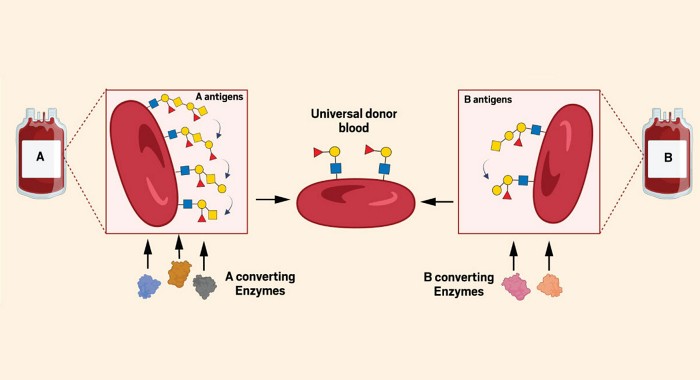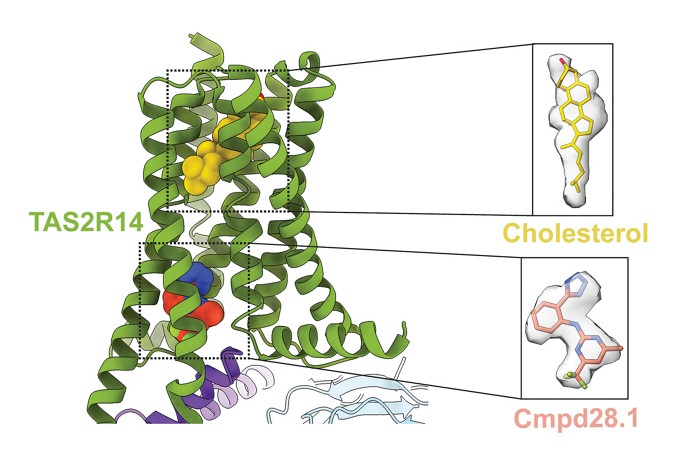×
CEN's 2020 Trailblazers
Paula Hammond: Drug delivery pioneer
Oluwatoyin "Toyin" Asojo: Rare-disease drug hunter
Laura Dassama: Sickle cell fighter
Cordell Hardy: Industrial innovator
Vernon Morris: Atmosphere investigator
Isiah Warner: Materials maestro and mentor
Malika Jeffries-EL: Semiconductor materials maven
Squire Booker: Catalysis champion
Jamel Ali & Patrick Ymele-Leki: Biofilm-busting duo
Carl Bonner: Jack of all chemistries
Cato Laurencin: Tissue regenerator
Kristala Prather: Synthesis warrior
Samson Jenekhe: Polymer powerhouse
Davita Watkins: Supramolecular chemistry sleuth
Karen Akinsanya: Strategic drug discoverer
Lynden Archer: Entrepreneurial educator
Etosha Cave: CO2 converter
Kimberly Jackson: Cancer slayer
Thomas Epps & LaShanda Korley: Upcycling champions
Sherine Obare: Interdisciplinary icon
Historical profiles
Contributors
C&EN's 2020 Trailblazers Celebrating badass women entrepreneurs in chemistry
Advertisement
Grab your lab coat. Let's get started
Welcome!
Welcome!
Create an account below to get 6 C&EN articles per month, receive newsletters and more - all free.
It seems this is your first time logging in online. Please enter the following information to continue.
As an ACS member you automatically get access to this site. All we need is few more details to create your reading experience.
Not you? Sign in with a different account.
Not you? Sign in with a different account.
ERROR 1
ERROR 1
ERROR 2
ERROR 2
ERROR 2
ERROR 2
ERROR 2
Password and Confirm password must match.
If you have an ACS member number, please enter it here so we can link this account to your membership. (optional)
ERROR 2
ACS values your privacy. By submitting your information, you are gaining access to C&EN and subscribing to our weekly newsletter. We use the information you provide to make your reading experience better, and we will never sell your data to third party members.
Biochemistry
Movers And Shakers
One on one with Squire J. Booker
Grad student Tariq Mehdi Bhatti talks with this chemist about the catalytic moments of his career
by Tariq Mehdi Bhatti, special to C&EN
February 22, 2021
| A version of this story appeared in
Volume 99, Issue 6
Squire J. Booker is a product of a close-knit Black community in Beaumont, Texas. He benefited from several early mentors and role models who guided his early path of achievement. Today, Booker’s research on radical-dependent enzymes has uncovered the mechanisms of antibiotic resistance and natural product biosynthesis. He has been recognized with the 2004 Presidential Early Career Award for Scientists and Engineers, a 2012 Arthur C. Cope Scholar Award from the American Chemical Society, and election to the National Academy of Sciences in 2018. Tariq Mehdi Bhatti spoke with Booker about what inspires him. This interview has been edited for length and clarity.

Credit: Courtesy of Squire J. Booker
Squire J. Booker
Squire J. Booker
Hometown: Beaumont, Texas
Education: BA, Austin College, 1987; PhD, Massachusetts Institute of Technology, 1994
Current position: Evan Pugh University Professor of Chemistry and of Biochemistry and Molecular Biology, Pennsylvania State University
Fun project he’s been working on: Since the pandemic, I’ve been working on my ancestry. Really interesting. Got me intensely engaged in American history.
Dream vacation: Spending the entire spring in Paris, hitting up all the museums, with weekend excursions to the wine country.
Tariq Mehdi Bhatti: When you were growing up, who were your role models in Beaumont?
Squire J. Booker: I was raised by my grandmother, Cleona Price, but I had three uncles who were very important in keeping me going in the right direction. One of them was a mathematics professor at the local university, who had also mentored Joseph Francisco, past president of the American Chemical Society and the National Organization for the Professional Advancement of Black Chemists and Chemical Engineers. The second uncle was a high school teacher and principal.
The uncle with whom I was closest was Albert Price. He was one of the very first Black commercial pilots. He had worked at NASA and was an Air Force pilot and was also elected to the Texas House of Representatives. Just incredibly ambitious, loved to talk, loved to mentor. And he was always interested in learning. He was always reading. And every time he saw me, he asked, “What are you reading?” And I had better been reading something!
TMB: Your summer undergraduate research experience at the Massachusetts Institute of Technology seemed like an important turning point in your career. Can you tell me more about that?
SB: The person who got me to do that was Joe Francisco. Joe called me and urged me to apply and get some research experience, to help stand out on future applications. I worked under Chris Walsh and the late Bill Orme-Johnson. I liked the whole idea of discovery. I liked the quantitative aspect of generating and interpreting data. I learned some techniques in anaerobic biochemistry. I learned how to purify proteins, which was absolutely key. And I just liked the atmosphere in the lab. It was a collegial place. I sort of ended up in the right situation, in the right environment, with the right people, at the right time.
TMB: And then you applied to MIT for graduate studies.
SB: I think that was actually the only place I applied to. And I was fortunate enough to get in. I worked for JoAnne Stubbe. My only real research experience was that summer at MIT. I needed some guidance, and she liked people who needed some guidance. She was very rigid in how people should be trained; so if you weren’t trained at all, that’s better than having been trained poorly. But soon enough, I came into my own.
TMB: Today, your most fruitful line of research seems to be on SAM [S-adenosyl methionine] methyltransferases. How did you start down that path?
SB: When I was with JoAnne, her major project was ribonucleotide reductases, these enzymes that make 2'-deoxyribonucleotides for DNA biosynthesis. One of the classes of those enzymes uses adenosylcobalamin. The way that enzyme works is that there is an organometallic bond between the cobalt of cobalamin and the 5'-carbon of 5'-deoxyadenosine. That bond homolyses to generate a radical on that 5'-carbon. And that radical is superpotent, and it abstracts a hydrogen atom from the nucleotide substrate. While I was a graduate student, Perry Frey at Wisconsin had discovered a new system by which that same radical is generated, a system that doesn’t use cobalamin but uses S-adenosyl methionine, which is a methylating agent, and an iron-sulfur cluster. So that was very hot at the time. I later worked with Perry on lysine 2,3-aminomutase. And so while I was a postdoc in his lab, there was this pivotal paper published saying that lysine 2,3-aminomutase was a paradigm enzyme in this huge superfamily of enzymes that use S-adenosyl methionine and a 4Fe-4S cluster to create radicals.
I liked the whole idea of discovery. I liked the quantitative aspect of generating and interpreting data.
At that point, I’m like, “Wow, there are other really interesting reactions out there that I could perhaps study that involve this radical-generating system.”
TMB: What do you see as your most significant work today?
SB: One of the most important areas of research in my lab right now is to understand how to methylate nonnucleophilic atoms using S-adenosyl methionine. A big hit was understanding how unactivated carbon centers in ribosomal RNA get methylated. And it turns out that bacteria that can do that become resistant to over seven classes of antibiotics currently in use. That was a really important reaction to understand. We were clearly the leaders in that area, and we published that initial work in two papers in Science in 2011.
More recently, we’ve been looking at other ways to install methyl groups on unactivated carbon centers. We published some papers in the Journal of the American Chemical Society and in Biochemistry on cobalamin-dependent methylases, which are found in biosynthetic pathways for numerous natural products that have clinical value. We’ve shown that the cobalt-methyl bond of methylcobalamin can be cleaved homolytically—a radical substrate can perform a single-electron nucleophilic attack on the methyl group. Before our studies, it was assumed that methylcobalamin is only cleaved heterolytically in enzyme reactions. The second big area of my research is how to functionalize unactivated carbon, something like a hydrocarbon, with sulfur. We know how to do that with oxygen and cytochrome P450s and such, but we know less about installing sulfur.
TMB: How fun is that! I’m researching controlled, oxidative functionalization of alkanes myself.
SB: Yours isn’t enzymatic—it’s organic?
TMB: Organometallic, studying electron transfer oxidation of late transition-metal hydrides.
SB: Right, sure. So C–H functionalization is what you do?
TMB: Exactly that, merging C–H activation with metal hydride oxidation.
SB: Yeah, so we do it enzymatically. We’ve been studying the mechanism of lipoyl synthase. We found that it uses the radical created from SAM to rip off hydrogen atoms from C8 and C6 of octanoic acid. And then those carbon-centered radicals attack a sacrificial iron-sulfur cluster on the protein. It yanks sulfur out of an iron-sulfur cluster! And then in 2017, we published another Science paper where we identified a system in E. coli that will put the sulfur back into the protein just as fast as it’s being used up.
TMB: And then it’s ultimately catalytic.
SB: It’s ultimately catalytic! It was awesome, awesome.

Credit: Courtesy of Tariq Mehdi Bhatti
Tariq Mehdi Bhatti is studying mechanisms of electron-transfer oxidation of pincer iridium hydrides with the goal of aerobic and electrochemical alkane dehydrogenation.
Tariq Mehdi Bhatti
Hometown: Crofton, Maryland
Education: BS, University of Maryland, College Park, 2009
Current position: PhD candidate, organometallic chemistry, Rutgers University–New Brunswick, working in Alan Goldman’s lab
First job: Quality-control technician, W. R. Grace
The best professional advice he has ever received: Imagine that you’re the only person who can solve this problem. What would you do?
Chemical & Engineering News
ISSN 0009-2347
Copyright © 2024 American Chemical Society




Join the conversation
Contact the reporter
Submit a Letter to the Editor for publication
Engage with us on Twitter